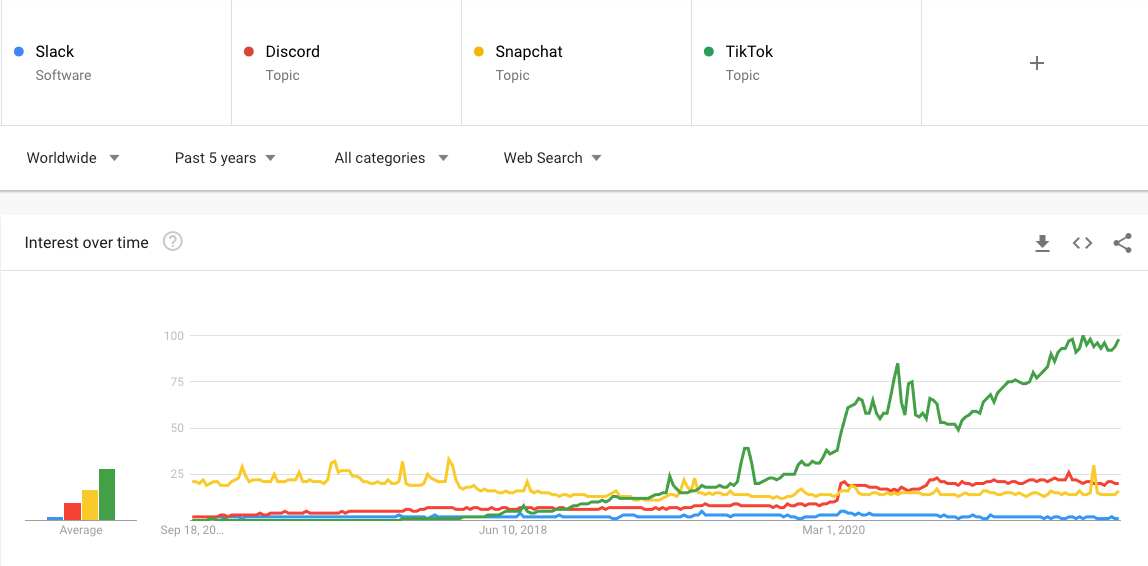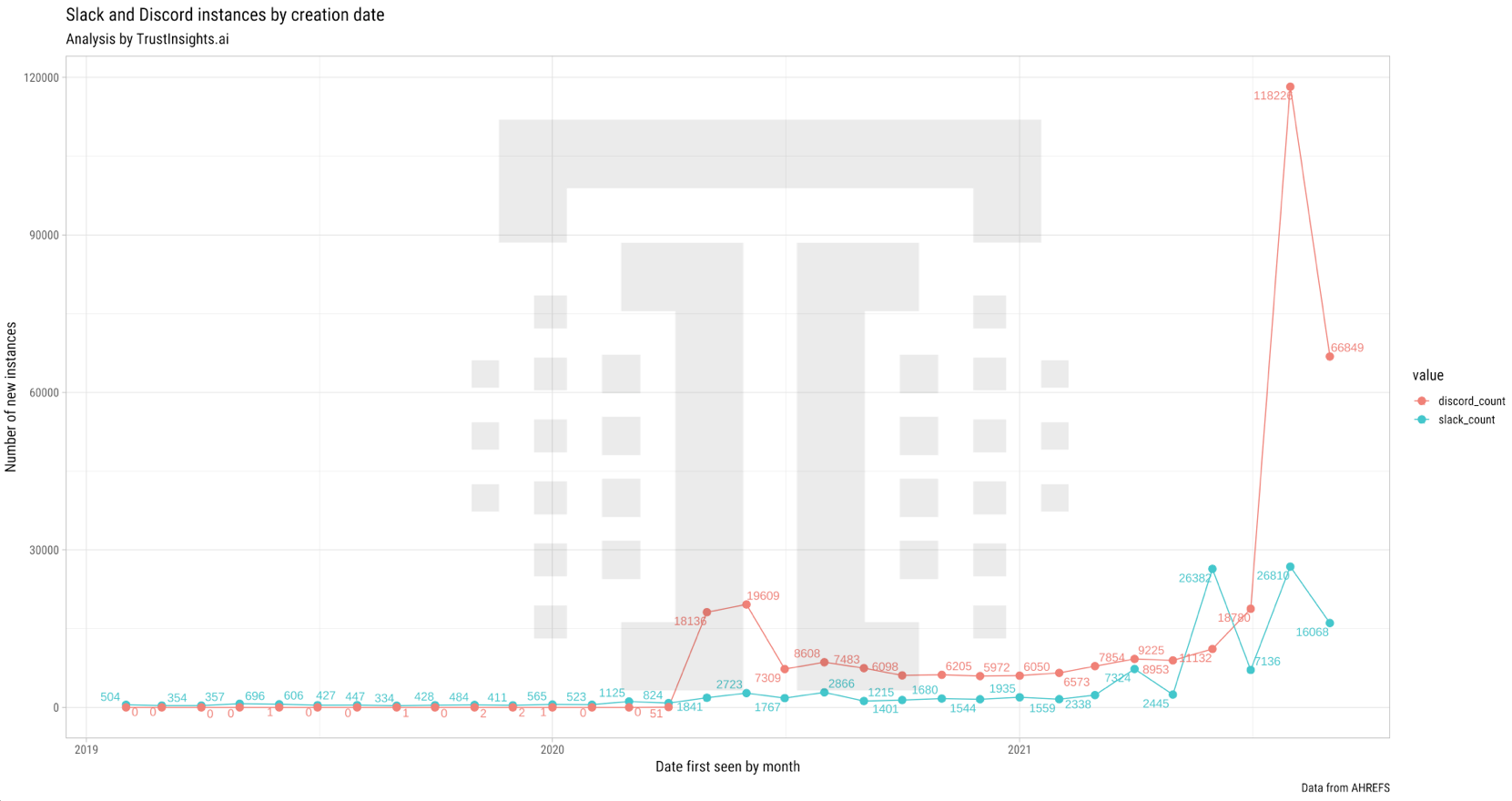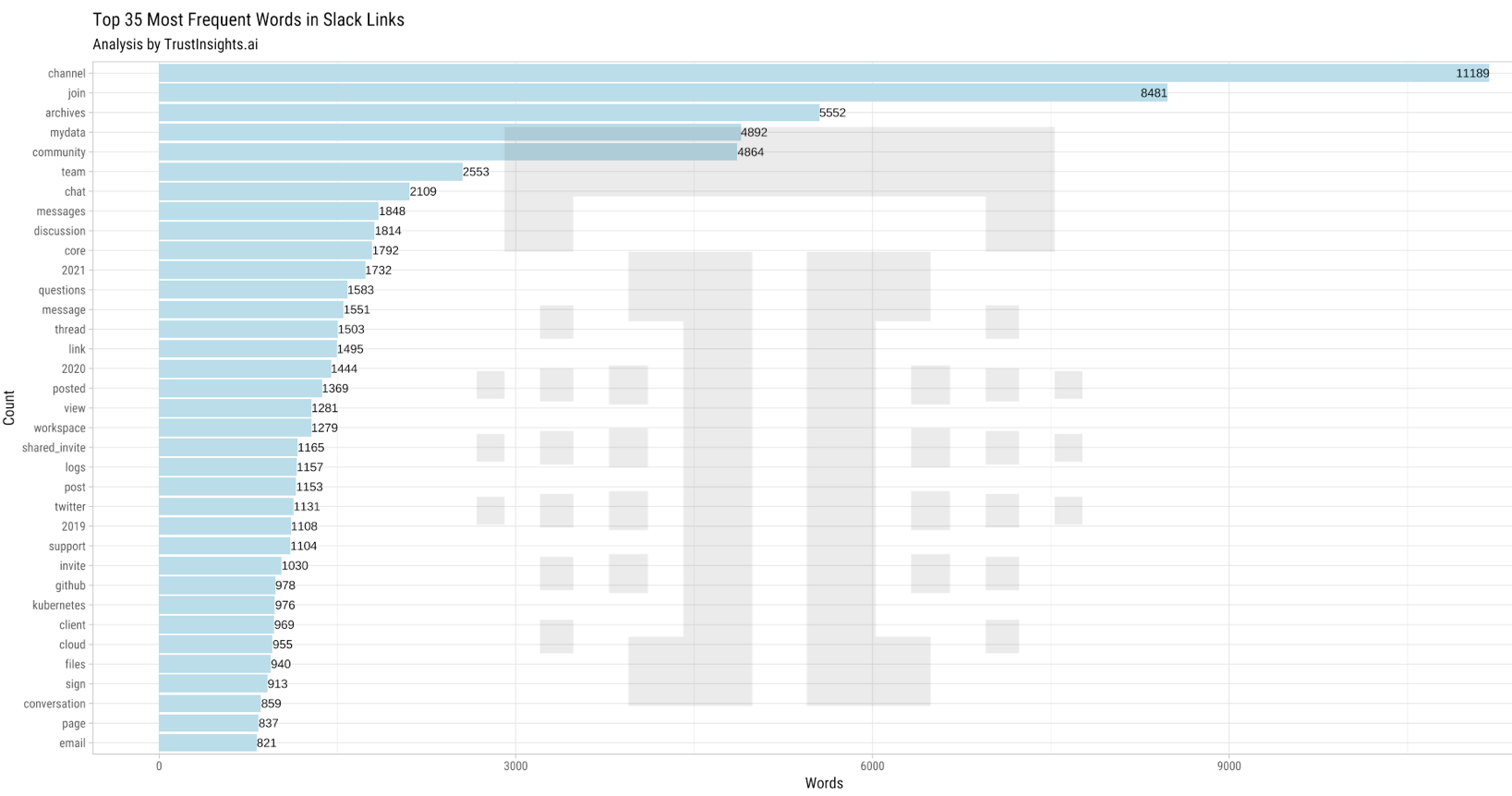INBOX INSIGHTS: Research Tools, Slack and Discord, Thumbstopping Content (9/15)
Tools for Researching Content
I love sleep. I do it poorly and don’t get enough of it. So why would I stay up way later than I needed to, choosing to sacrifice any precious sleep I get? I started reading a book that I could not put down. I had to know what happened. I had to get to the end. Thankfully, the ending did not disappoint.
This got me thinking about our end goal as content creators: compelling content that people can’t put down.
Sometimes we get lucky and happen to hit on a topic that does well, gets a lot of views and shares, and drives traffic to our website. Other times, we can pour our hearts and souls into a piece of content and two or three people give it the time of day.
So, how do we do better? How do we create content that people care about?
It starts with research. Typing your topic into a search bar is a great start. Unfortunately, that’s where it stops for a lot of people. Here’s how to take it a step further.
This is an underrated and underused tool for content creators. From their site, “AnswerThePublic listens into autocomplete data from search engines like Google then quickly cranks out every useful phrase and question people are asking around your keyword.
It’s a goldmine of consumer insight you can use to create fresh, ultra-useful content, products, and services. The kind your customers really want.”
If you want to know what questions your content should answer, this is a great starting point.
Social Listening Tools
Talkwalker and Sprout Social are good options for social listening. You can search for topics and see what people are saying and what information they are sharing.
This free tool allows you to look at a topic, or a few different topics and see if anyone is searching for it. The data goes back to 2004 so you can use Google Trends to see if there is any kind of pattern or seasonality to the search.
SEO Tools
AHREFS and SEMRush are the tools that we use. These tools can tell you search volume on any given keyword and if someone is already ranking for it. This means that you’ll be competing against that entity to show up in search results.
This is a brief cheat sheet for you to use the next time you’re tasked with creating a new piece of content. Using one or more of these tools will help you set yourself up for success.
What compelling content have you read lately? Tell me in our Free Slack Group Analytics for Marketers!
– Katie Robbert, CEO

Do you have a colleague or friend who needs this newsletter? Send them this link to help them get their own copy:
https://www.trustinsights.ai/newsletter

In this episode, Katie and Chris discuss what makes truly compelling content marketing, from storytelling structures to research and development. How do you keep people engaged in your content? Tune in to find out!
Watch/listen to this episode of In-Ear Insights here »
Last week on So What? The Marketing Analytics and Insights Live Show, we took a guided tour of Google’s Postmaster Tools, one of the most important tools for any email marketer to know well.
Watch/listen to this episode of So What? here »
This Thursday at 1 PM Eastern, we’ll be reviewing our lessons learned from a year of live streaming. Tune in!
Are you following our YouTube channel? If not, click/tap here to follow us!
Need a reminder?

Here’s some of our content from recent days that you might have missed. If you read something and enjoy it, please share it with a friend or colleague!
- INBOX INSIGHTS, September 8, 2021: What Do You Do, YouTube Impact on Brand, B2B Marketing Strategy
- {PODCAST} In-Ear Insights: Common Marketing Metrics and B2B Marketing Strategy
- So What? Google PostMaster Tools
- What effect does Title Case have on engagement of Instagram posts?
- Marketing Analytics, Data Science and Leadership September 13, 2021 Week In Review

In this week’s Data Diaries, we take a look at two of the most popular private social network platforms, Slack and Discord. For those unfamiliar, Slack and Discord are similar private chat communities where people can join an individual community (Slack tends to use the terms channel or workspace, Discord tends to use the term server) and have conversations with others around a common interest. Think of them like a Facebook or LinkedIn group dedicated to just one interest and nothing else. What’s different about these social networks is that unlike more mainstream networks like Facebook, private social networks have no algorithms or feeds moderating the user’s experience – you see what people publish, as they publish it.
First, how do these networks fit into our model of the social media space? A quick look at Google Trends shows that while Slack is relatively small in general search interest worldwide, and Tiktok exploded in 2020, Discord has been on the rise and has exceeded interest in Snapchat:

Slack began initially as a corporate communications tool, an internal communications mechanism like Microsoft Teams, Salesforce Chatter, etc. and has since branched out to offering publicly accessible communities. It’s most popular in the tech and B2B spaces.
Discord began initially as a community tool for gamers and gaming. Over time, it too has diversified its appeal and reach to consumers more generally.
Both tools offer the ability to create links inviting users to join servers, such as our Analytics for Marketers Slack group. It’s here we start to dig into data – once a link appears on the public web, we can start to analyze it.
When we look at new links to Slack and Discord servers, we see this trend over time:

Unsurprisingly, prior to the pandemic, public server promotion was relatively low, but once the pandemic hit, everyone started looking for ways to collaborate and communicate with each other remotely. In the last year and a half, hundreds of thousands of Discord servers have appeared that the public can join; tens of thousands of Slack servers have also appeared.
What are the major descriptors of each? When we look at a simple word count of the terms used most frequently by links to their respective servers, we see a difference in language used. Here are the top 35 most frequent words used in links to Slack groups:

We see lots of general operational words like joining the channel, the team, etc., as well as some topics like Kubernetes and cloud computing. This hints at the legacy of Slack as well as who you’ll find on the service in general.

With Discord we see servers, communities, as well as other social networks – Facebook, Twitter, Telegram, etc. and some topics like games and NFTs.
So what do you do with this information? These services are growing rapidly with audiences wanting to get away from bigger tech networks like Facebook. Poll your audience about which, if any, of these two platforms they use, and if there’s enough people answering one or the other, consider setting up a community for your brand. While these communities take effort to grow, they provide an invaluable focus group of sorts for your most ardent fans and insights into what’s on their minds.
To see an example, join our free Analytics for Marketers Slack group.
Methodology: Trust Insights extracted 150,000 inbound links to Slack and Discord’s respective domains, filtering for live links from the AHREFS SEO platform. The timeframe of the data is January 1, 2019 – September 13, 2021. The date of study is September 15, 2021. Trust Insights is the sole sponsor of the study and neither gave nor received compensation for data used, beyond applicable service fees to software vendors, and declares no competing interests.

Get skilled up with an assortment of our free, on-demand classes.
- Proving Social Media ROI
- How to Deliver Reports and Prove the ROI of your Agency
- Next-Level Twitter Analytics
- Competitive Social Media Analytics Strategy
- What Works on Instagram: A Data-Driven Study
- Predictive Analytics and Customer Experience

This is a roundup of the best content you and others have written and shared in the last week.
SEO, Google, and Paid Media
- 19 Ways to Increase Organic SEO Traffic (With Examples and Templates)
- Budgeting for SEO: How Much Should You Be Spending On SEO Marketing? via DigitalMarketer
- Messy SEO Part 2: The importance of canonicalization
Social Media Marketing
- Essential Tips and Tools for B2B Social Media Marketing
- How to Get Verified on TikTok: 5 Steps to Make it Happen
- TikToklove’s Guide To Attracting More People On TikTok via Technosoups
Content Marketing
- Avoid The Content Marketing Graveyard
- Have Influencers Lost Their Influence? A PR Perspective via PR Academy
- Does your brand need an audio content strategy now, too? |
Data Science and AI
- 9 AI Tools for Successful Marketing Funnels
- DeepMind aims to marry deep learning and classic algorithms via VentureBeat
- AI drives data analytics surge, study finds via VentureBeat

Are you a member of our free Slack group, Analytics for Marketers? Join 1900+ like-minded marketers who care about data and measuring their success. Membership is free – join today. Members also receive sneak peeks of upcoming data, credible third-party studies we find and like, and much more. Join today!

Trust Insights is hiring!
We’re specifically hiring for a part-time Account Manager, someone who can weave the complex magic that is balancing client needs, company needs, and keeping as many people happy as practical. This is a remote, work from anywhere with good Internet access position for an independent contractor.
For full details, check out our Careers page listing »
Interested in sponsoring INBOX INSIGHTS? Contact us for sponsorship options to reach over 18,000 analytically-minded marketers and business professionals every week.

Where can you find us in person?
- MarTech Conference, September 2021, virtual
- Content Marketing World, September 2021, virtual
- MarketingProfs B2B Forum, October 2021, virtual
Going to a conference we should know about? Reach out!
Want some private training at your company? Ask us!

First and most obvious – if you want to talk to us about something specific, especially something we can help with, hit up our contact form.
Where do you spend your time online? Chances are, we’re there too, and would enjoy sharing with you. Here’s where we are – see you there?
- Our blog
- Slack
- YouTube
- In-Ear Insights on Apple Podcasts
- In-Ear Insights on Google Podcasts
- In-Ear Insights on all other podcasting software

Our Featured Partners are companies we work with and promote because we love their stuff. If you’ve ever wondered how we do what we do behind the scenes, chances are we use the tools and skills of one of our partners to do it.
- Hubspot CRM
- StackAdapt Display Advertising
- Agorapulse Social Media Publishing
- WP Engine WordPress Hosting
- Techsmith Camtasia and Snagit Media Editing
- Talkwalker Media Monitoring
- Marketmuse Professional SEO software
- Gravity Forms WordPress Website Forms
- Otter AI transcription
- Semrush Search Engine Marketing
- Our recommended media production gear on Amazon
Read our disclosures statement for more details, but we’re also compensated by our partners if you buy something through us.

Some events and partners have purchased sponsorships in this newsletter and as a result, Trust Insights receives financial compensation for promoting them. Read our full disclosures statement on our website.

Thanks for subscribing and supporting us. Let us know if you want to see something different or have any feedback for us!









One thought on “INBOX INSIGHTS, September 15, 2021: Research Tools, Slack and Discord, Thumbstopping Content”